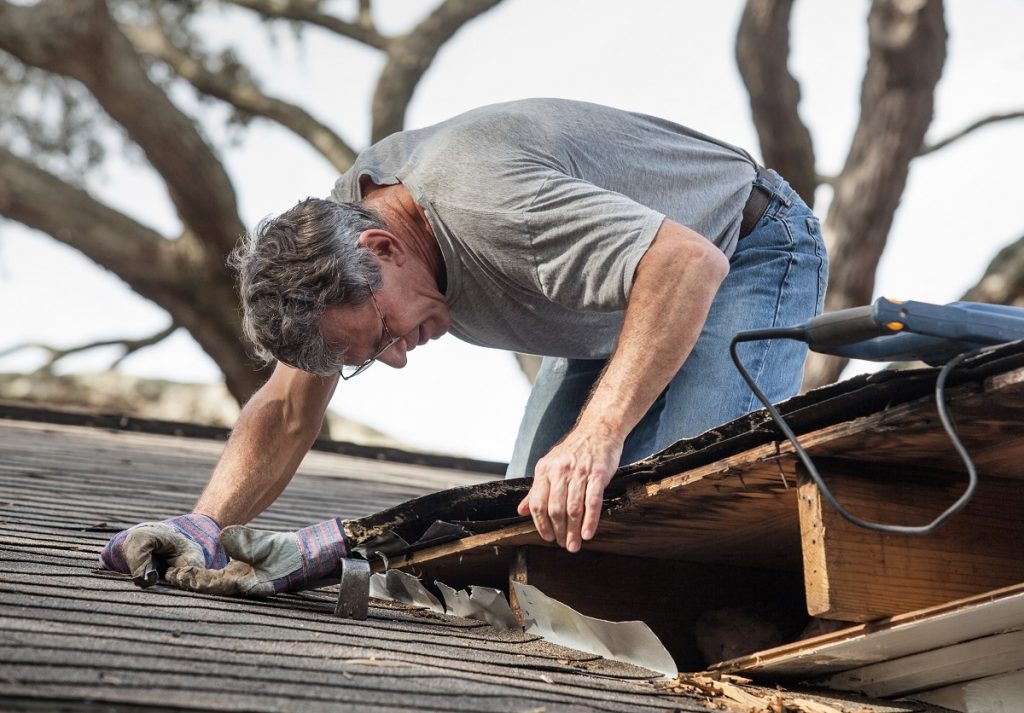Most people might not realize it, but roofing is considered to be one of the oldest professions in the construction industry. After all, we’ve had the gable-shaped roof in almost any iconic structure around the world. Whether we’re talking about far-eastern Asian architecture to classical Victorian-themed homes, roofs have been protecting homes from the elements for thousands of years.
When you’re inviting over guests to your humble abode, it’s essential to make an excellent first impression. Usually, one of the best ways of doing so is by improving your home’s exterior design. The majority of the time, the first thing that people will see is the roof, followed by several outer structures.
Of course, there’s more to roofing than what meets the eye. Since you’re a beginner to this industry, it’s paramount that you get some knowledge of the strengths and weaknesses of each material used on your roof. Roofs usually contain a wide variety of materials that work in tandem with each other, with most people aimed at extending the lifespan while maintaining a suitable amount of artistic appeal.
Handling Roof Materials
Right before going through with the plans of your roof, you’ll need to know the different styles of installing a roof. Planning is the first phase of the process and will determine how efficient your roof is for years to come. Usually, people will focus more on the aesthetics of roofing materials, but in reality, they should focus more on the durability, versatility, and lifespan of your roof.
Sure, your roof’s appeal can draw attention, but it will all boil down to how efficient it can resist the elements of the weather.
Material Used
First and foremost, we have to understand the materials that you’ll use. There’s certainly a lot of options in the market, but each roofing material that you see will have its unique characteristics.
What are those unique traits that they have? Here are some to consider:
Asphalt Shingles – This is one of the most common types of roofing that you will see in the United States and almost anywhere around the world. More than half of residential homes in the United States use this type of roofing. It’s well known for being cheap, easy-to-install, and can be easily replaced if needed. However, it does have a limited lifespan.
Metal Roofing – Usually, there are two styles of metal roofing. The first is corrugated roofing, which is quite common, cheap, and widely available. The other type would be standing seam metal roofing, which has a significantly better lifespan and durability but comes with a hefty price tag. Aside from asphalt shingles, this type of roofing is usually used for commercial buildings and is also one of the most common in the market.
Slate Tile Roofing – This might seem impossible to believe, but slate tile roofing is highly sought after because it has a lifespan reaching 100 years. That’s right, this type of roofing has possibly to be one of the rarest and most expensive in the industry. Because it’s one of the more unusual materials, coupled with high demand, it’s going to be a challenge to find them. Even if you do find this material, the typical cost will be around $11,500 to $24,000 for an average-sized roof.
Wooden Shingles – If you’re into having a more rustic theme for your home, wood shingles are a good way of maintaining the right amount of heat, especially if you’re in a rural area that gets snow annually.
These roofing materials are made out of different elements that will react to different natural phenomenons. Metal roofing will expand and recede when exposed to temperature changes, wooden shingles have good insulation but is also flammable, and slate tile roofing is usually used in coastal towns since it’s heavy and can withstand storms. As such, it’s best to think things through before making any final decision on what you want to use.
Let’s also not forget that there are also roofing materials that are used for flat roofs. However, flat roofing will usually have its own installation process and maintenance.
The Right Professional

Now that you know the simple basics of what kind of material you should use, it’s now time to start looking for a contractor that can set up your roof for you. Setting up your roof is a significant investment, and shingling can be a delicate process in itself. As such, a roofing professional will ensure that your roof is installed correctly and without any complications.
Additionally, building rapport with your roofing professional is paramount in the long-term maintenance of your roof. Most individuals will usually stop communicating right after the roof is done, but essential roofing repair services need to be done annually. Therefore, it’s always a good idea to keep in touch with them.
This industry has been around for thousands of years. As such, there’s always going to be a roofing professional that can help you out. There’s so much to the roofing industry than just these materials, though. It is only the tip of the iceberg. But we sincerely hope that this will give you a good foundation of knowledge for your roofing project. If you’re in a hurry to have that roof up and running, it’s important to note that installing a roof can be a time-consuming and arduous process, so it’s always an excellent choice to hire a trusted professional.

